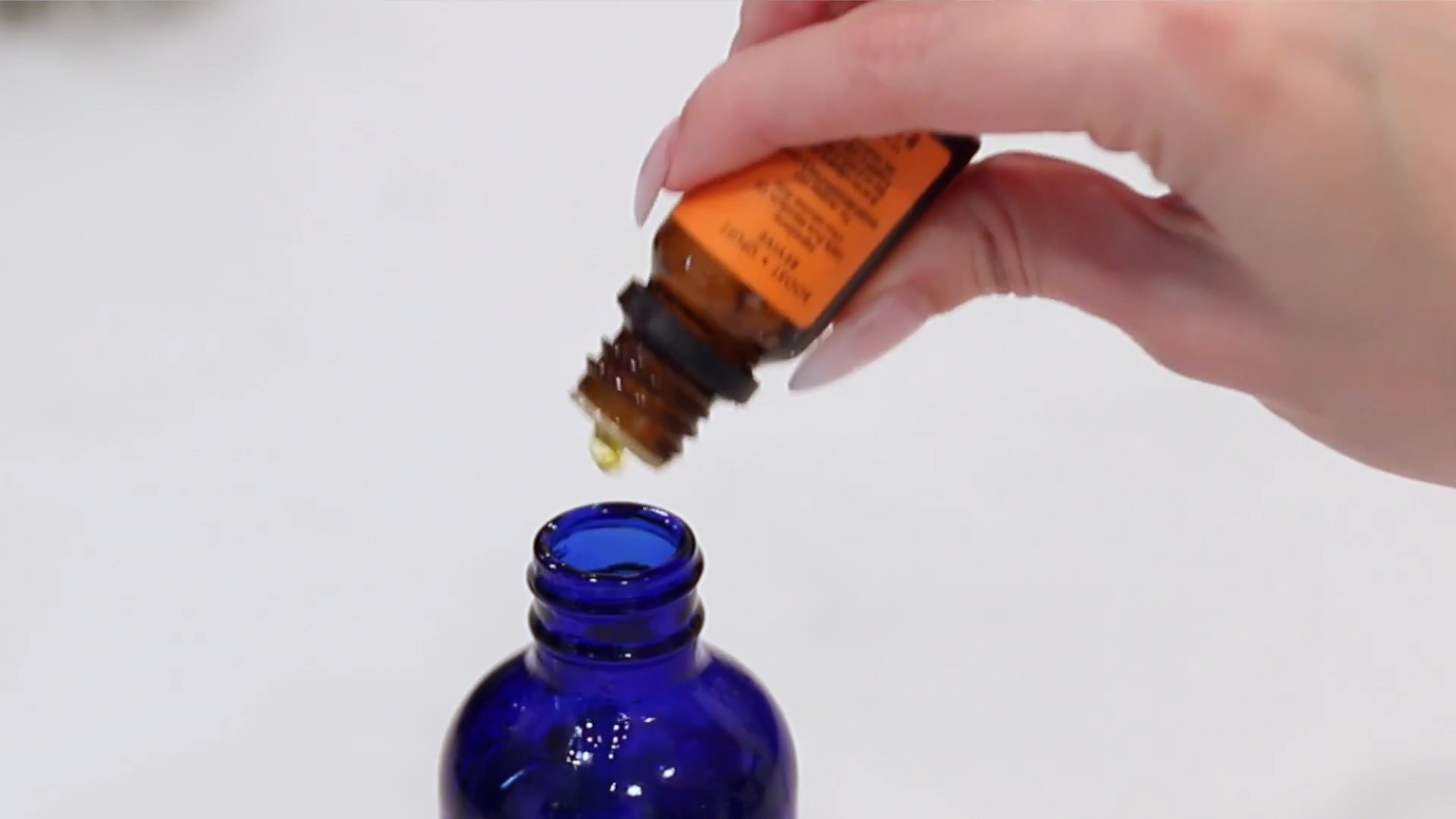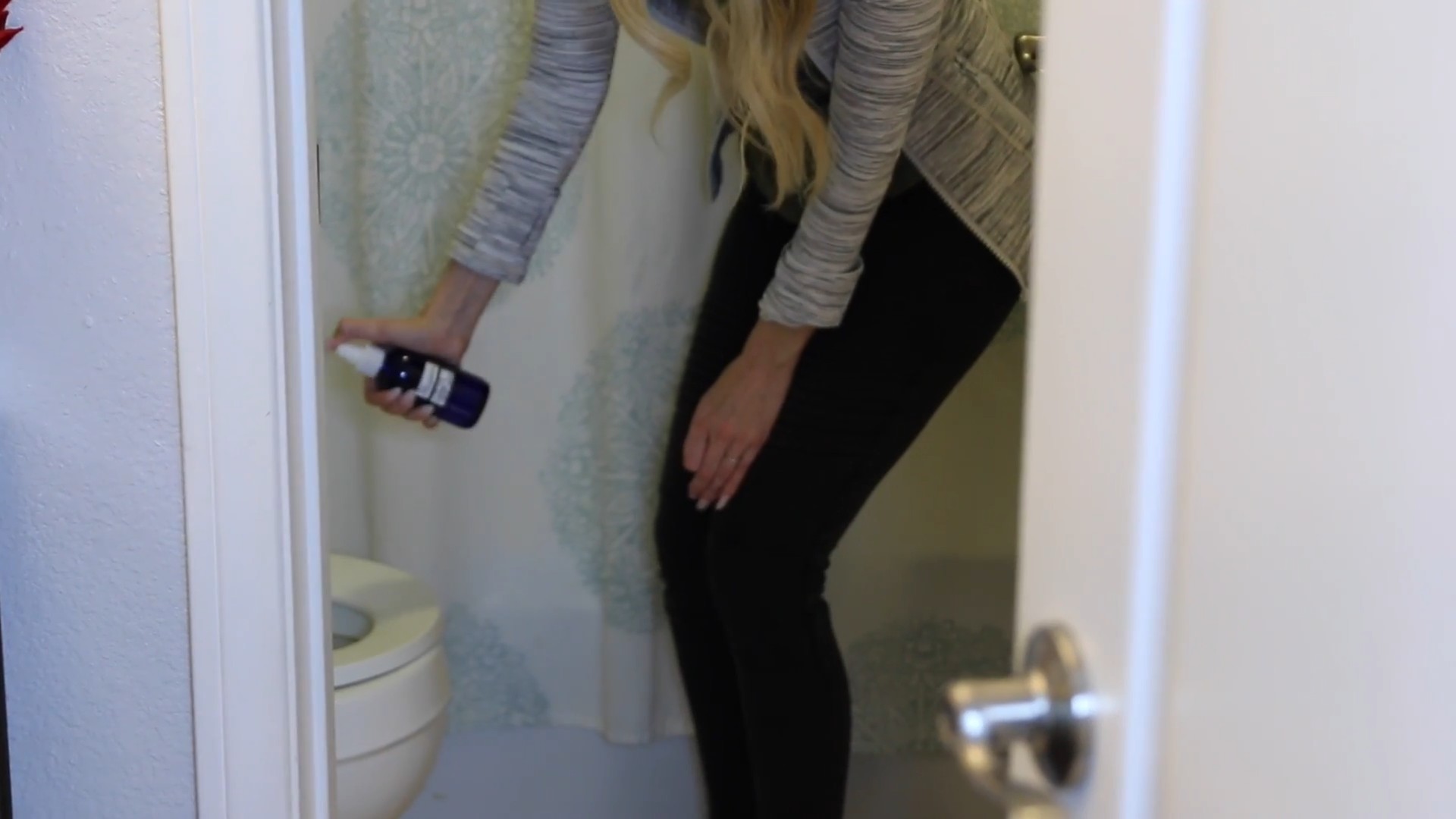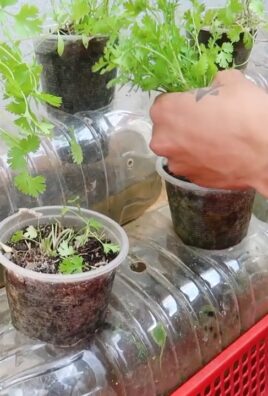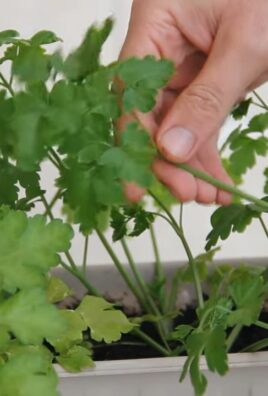Home Hacks and DIY Projects – ever feel like your living space could use a little magic touch, a sprinkle of personality, or maybe just a clever solution to a nagging problem? I know I do! For centuries, people have been finding creative ways to improve their homes, from ancient Roman mosaics to the ingenious contraptions of the Victorian era. The desire to personalize and optimize our living environments is deeply ingrained in us.
But let’s be honest, sometimes the thought of tackling a home improvement project can feel overwhelming. That’s where the beauty of DIY comes in! This article is your ultimate guide to unlocking the potential of your home with simple, effective, and budget-friendly Home Hacks and DIY Projects.
We’ll explore a treasure trove of ideas, from clever storage solutions that banish clutter to easy decor updates that breathe new life into tired spaces. Why spend a fortune on expensive renovations when you can achieve amazing results with a little creativity and elbow grease? Whether you’re a seasoned DIY enthusiast or a complete beginner, I’m confident you’ll find inspiration and practical tips to transform your house into a home you truly love. Let’s get started and unleash your inner home hacker!

DIY Floating Shelves: A Weekend Project for a Stylish Home
Okay, let’s dive into building some seriously cool floating shelves! I’ve always loved the clean, minimalist look of floating shelves, and honestly, they’re way easier to build than you might think. This guide will walk you through every step, from gathering your materials to proudly displaying your favorite succulents.
Materials You’ll Need
Before we get started, let’s make sure you have everything you need. This is crucial for a smooth and enjoyable building experience. Trust me, nothing’s worse than realizing you’re missing a key component halfway through!
* **Lumber:** This is the heart of your shelves! I recommend using solid wood like pine, oak, or maple. The type of wood will depend on your budget and the look you’re going for. For this project, I’m using a 1×10 pine board (actual dimensions are usually closer to 3/4″ x 9 1/4″) cut to the desired length of my shelves. Decide on the length and depth you want your shelves to be. I’m making three shelves, each 36 inches long and 9 1/4 inches deep.
* **Metal Shelf Brackets (Hidden):** These are what make the shelves “float.” Make sure you choose brackets that are strong enough to support the weight you plan to put on the shelves. Look for brackets specifically designed for floating shelves, as they have a rod or flat bar that slides into a hole drilled in the back of the shelf. I’m using heavy-duty steel brackets that can hold up to 50 lbs each.
* **Wood Screws:** You’ll need these to attach the brackets to the wall studs. Choose screws that are long enough to go through the bracket and securely into the stud. I’m using 3-inch wood screws.
* **Wood Glue:** This will help reinforce the shelf and prevent it from sagging over time.
* **Wood Filler (Optional):** If you’re using wood with imperfections or want to hide screw holes, wood filler is your friend.
* **Sandpaper:** You’ll need various grits of sandpaper (80, 120, and 220) to smooth the wood and prepare it for finishing.
* **Wood Stain or Paint:** Choose a stain or paint that complements your decor. I’m going with a light gray stain for a modern look.
* **Polyurethane or Varnish (Optional):** This will protect the wood from scratches and moisture.
* **Safety Glasses:** Always protect your eyes!
* **Dust Mask:** Especially important when sanding.
* **Gloves:** To protect your hands from stain or paint.
Tools You’ll Need
Having the right tools makes all the difference. Don’t worry if you don’t have everything on this list; you can often borrow tools from friends or rent them from a local hardware store.
* **Drill:** A must-have for drilling pilot holes and driving screws.
* **Stud Finder:** Absolutely essential for finding the wall studs to securely mount the brackets.
* **Level:** To ensure your shelves are perfectly straight.
* **Measuring Tape:** For accurate measurements.
* **Pencil:** For marking measurements.
* **Clamps:** To hold the wood pieces together while the glue dries.
* **Sander (Optional):** A power sander will speed up the sanding process, but you can also sand by hand.
* **Miter Saw or Circular Saw:** For cutting the wood to the desired length. A hand saw will also work, but it will take longer.
* **Forstner Bit (or Spade Bit):** This is crucial for drilling the large holes in the back of the shelf to accommodate the floating shelf brackets. The size of the bit will depend on the diameter of the bracket rods.
* **Paintbrushes or Rags:** For applying stain or paint.
Step-by-Step Instructions
Alright, let’s get building! Follow these steps carefully, and you’ll have beautiful floating shelves in no time.
1. Prepare the Wood
1. **Cut the Wood:** Using your miter saw or circular saw, cut the lumber to the desired length for your shelves. Remember, I’m cutting mine to 36 inches each. Make sure your cuts are straight and clean.
2. **Sand the Wood:** Start with 80-grit sandpaper to remove any rough edges or imperfections. Then, move on to 120-grit sandpaper to smooth the surface. Finally, use 220-grit sandpaper for a super-smooth finish. Sand with the grain of the wood. Don’t skip this step! A smooth surface is key for a professional-looking finish.
3. **Clean the Wood:** Use a tack cloth or a damp cloth to remove all the sanding dust. This will ensure that the stain or paint adheres properly.
2. Drill the Bracket Holes
1. **Measure and Mark:** This is where precision is key! Measure and mark the locations for the bracket holes on the back of each shelf. Use your stud finder to locate the studs in your wall. The bracket holes need to align with the studs. I’m spacing my brackets 16 inches apart, as that’s the standard spacing for wall studs in my house.
2. **Drill the Holes:** Using your Forstner bit (or spade bit), drill the holes to the appropriate depth and diameter to accommodate the floating shelf brackets. Be careful not to drill all the way through the shelf! The depth of the hole should be slightly less than the length of the bracket rod. Drill slowly and steadily to avoid splintering the wood.
3. **Test Fit:** Before moving on, test fit the brackets in the holes to make sure they fit snugly but not too tightly. You should be able to slide them in and out with a little effort.
3. Stain or Paint the Shelves
1. **Apply Stain or Paint:** In a well-ventilated area, apply your chosen stain or paint to the shelves. Follow the manufacturer’s instructions for application and drying time. I’m applying two coats of light gray stain, allowing each coat to dry completely before applying the next.
2. **Apply Polyurethane or Varnish (Optional):** If you want to protect the wood from scratches and moisture, apply a coat of polyurethane or varnish after the stain or paint has dried completely. This will also give the shelves a more durable finish.
4. Mount the Brackets to the Wall
1. **Locate the Studs:** Use your stud finder to accurately locate the wall studs where you want to mount the shelves. Mark the stud locations with a pencil.
2. **Position the Brackets:** Hold the brackets against the wall, aligning them with the stud marks. Use a level to ensure the brackets are perfectly horizontal.
3. **Drill Pilot Holes:** Drill pilot holes through the bracket mounting holes and into the wall studs. This will make it easier to drive the screws and prevent the wood from splitting.
4. **Attach the Brackets:** Using your wood screws, securely attach the brackets to the wall studs. Make sure the screws are driven in straight and tight. Double-check that the brackets are still level after attaching them.
5. Install the Shelves
1. **Slide the Shelves onto the Brackets:** Carefully slide the shelves onto the brackets, making sure the bracket rods are fully inserted into the holes you drilled earlier.
2. **Check for Level:** Use your level to ensure the shelves are perfectly level. If necessary, adjust the brackets slightly to achieve a level surface.
3. **Secure the Shelves (Optional):** For added security, you can use a small screw to attach the shelves to the brackets from underneath. This will prevent the shelves from accidentally being pulled off the brackets.
6. Finishing Touches
1. **Fill Screw Holes (Optional):** If you used screws to secure the shelves to the brackets, you can fill the screw holes with wood filler. Allow the wood filler to dry completely, then sand it smooth.
2. **Touch Up Paint or Stain (Optional):** If necessary, touch up any areas where the paint or stain has been scratched or damaged.
3. **Display Your Treasures:** Now comes the fun part! Decorate your new floating shelves with your favorite books, plants, photos, and other treasures.
Tips and Tricks
* Choose the Right Wood: The type of wood you choose will affect the look and durability of your shelves. Pine is a good budget-friendly option, while oak and maple are more durable and have a richer grain.
* Accurate Measurements are Key: Take your time and measure carefully to ensure that your shelves are level and properly aligned.
* Use a Stud Finder: Don’t skip this step! Mounting the brackets to wall studs is essential for ensuring that your shelves are strong and stable.
* Pre-Drill Pilot Holes: This will prevent the wood from splitting when you drive in the screws.
* Don’t Overload the Shelves: Be mindful of the weight capacity of your brackets. Don’

Conclusion
So, there you have it! This simple yet effective DIY trick is more than just a clever shortcut; it’s a game-changer for anyone looking to streamline their home maintenance and add a personal touch to their living space. We’ve walked you through the process, highlighting the ease and affordability of creating your own customized solutions. The beauty of this project lies not only in its practicality but also in its adaptability. You’re not just following a recipe; you’re embarking on a creative journey.
Why is this a must-try? Because it empowers you to take control of your environment. Instead of relying on expensive, mass-produced items that may not perfectly suit your needs, you can craft something unique, tailored to your specific requirements and aesthetic preferences. Think about the satisfaction of knowing you created something functional and beautiful with your own two hands. That’s a feeling you can’t buy in a store.
Beyond the immediate benefits, this DIY trick fosters a sense of resourcefulness and sustainability. By repurposing materials and minimizing waste, you’re contributing to a more eco-conscious lifestyle. It’s a small step, but every little bit counts. Plus, it’s a fantastic way to unleash your inner artist and experiment with different textures, colors, and designs.
Consider these variations to further personalize your project:
* **Experiment with different materials:** Don’t limit yourself to the suggested supplies. Explore alternative options like reclaimed wood, recycled fabrics, or even natural elements like dried flowers or leaves.
* **Incorporate unique embellishments:** Add decorative touches like stencils, paint, beads, or buttons to create a truly one-of-a-kind piece.
* **Adjust the size and shape:** Tailor the dimensions to perfectly fit your space and needs. Whether you need a small organizer for your desk or a large storage solution for your closet, you can customize the project accordingly.
* **Explore different finishes:** Experiment with various paints, stains, or varnishes to achieve the desired look and feel. A matte finish can create a rustic vibe, while a glossy finish can add a touch of elegance.
We genuinely believe that this **DIY home hack** is something everyone should try. It’s a fun, rewarding, and practical way to enhance your home and express your creativity. So, gather your supplies, roll up your sleeves, and get ready to transform your space.
But the journey doesn’t end here! We’re eager to hear about your experiences. Did you try this DIY trick? What variations did you incorporate? What challenges did you encounter, and how did you overcome them? Share your photos, tips, and stories in the comments section below. Let’s create a community of DIY enthusiasts who inspire and support each other. Your feedback is invaluable, and it helps us refine our instructions and provide even better content in the future. We can’t wait to see what you create!
Frequently Asked Questions (FAQ)
What if I don’t have all the materials listed? Can I substitute them?
Absolutely! One of the best things about DIY projects is the flexibility to adapt and improvise. If you’re missing a specific material, don’t hesitate to get creative with substitutions. For example, if you don’t have the exact type of adhesive recommended, you can try using a strong craft glue or even a hot glue gun (exercise caution!). Similarly, if you’re short on a particular fabric, you can repurpose an old t-shirt, sheet, or even a piece of burlap. The key is to consider the properties of the original material and find a suitable alternative that offers similar functionality and aesthetics. Just be sure to test your substitutions on a small, inconspicuous area first to ensure they work as expected.
I’m not very experienced with DIY projects. Is this trick suitable for beginners?
Yes, definitely! We designed this DIY trick with beginners in mind. The steps are straightforward, the materials are readily available, and the techniques are relatively simple to master. We’ve also included detailed instructions and helpful tips to guide you through the process. Don’t be intimidated if you’ve never tackled a DIY project before. This is a great starting point to build your confidence and develop your skills. Remember, everyone starts somewhere, and even experienced DIYers were once beginners. The most important thing is to have fun and be patient with yourself. If you encounter any difficulties, don’t hesitate to consult online resources or ask for help from a friend or family member.
How long will this DIY project take to complete?
The time required to complete this DIY project will vary depending on your skill level, the complexity of your design, and the materials you’re using. However, in general, you can expect to spend anywhere from one to three hours on the project. If you’re a beginner, it might take a little longer as you familiarize yourself with the techniques and materials. To save time, gather all your supplies beforehand and clear a workspace where you can spread out and work comfortably. You can also break the project down into smaller steps and tackle them over several days if you prefer.
How durable is the finished product? Will it last a long time?
The durability of your finished product will depend on the quality of the materials you use and the care you take in constructing it. Using high-quality materials and following the instructions carefully will significantly increase the lifespan of your project. Additionally, consider applying a protective finish, such as a sealant or varnish, to further enhance its durability and resistance to wear and tear. With proper care and maintenance, your DIY creation should last for years to come.
Can I customize this DIY trick to match my home decor?
Absolutely! Customization is one of the biggest advantages of DIY projects. You have complete control over the design, materials, and finishes, allowing you to create something that perfectly complements your home decor. Consider the color palette, style, and overall aesthetic of your space when making design choices. You can choose fabrics, paints, and embellishments that coordinate with your existing furniture and accessories. You can also experiment with different patterns, textures, and shapes to create a unique and personalized piece that reflects your individual taste. Don’t be afraid to get creative and think outside the box.
What are some safety precautions I should take when working on this DIY project?
Safety should always be a top priority when undertaking any DIY project. Before you begin, take a moment to familiarize yourself with the tools and materials you’ll be using and follow all safety guidelines provided by the manufacturers. Wear appropriate protective gear, such as gloves, safety glasses, and a dust mask, to protect yourself from potential hazards. Work in a well-ventilated area to avoid inhaling fumes from paints, adhesives, or other chemicals. Be careful when using sharp tools, such as scissors, knives, or saws, and always cut away from your body. If you’re working with power tools, be sure to read the instructions carefully and follow all safety precautions. Keep your workspace clean and organized to prevent accidents. And finally, if you’re unsure about any aspect of the project, don’t hesitate to seek guidance from a more experienced DIYer.
Where can I find inspiration for my DIY project?
Inspiration is everywhere! Look around your home, browse through magazines and books, and explore online resources like Pinterest, Instagram, and DIY blogs. Pay attention to the colors, patterns, and textures that appeal to you. Consider the functionality you’re trying to achieve and the space where the project will be located. Don’t be afraid to draw inspiration from unexpected sources, such as nature, art, or even fashion. The key is to gather ideas and then adapt them to your own style and needs. Remember, there are no rules when it comes to creativity.
What if I make a mistake? Can I fix it?
Mistakes are a natural part of the DIY process. Don’t get discouraged if you make a mistake along the way. Most mistakes can be easily fixed with a little patience and ingenuity. If you accidentally cut something too short, you can often add a patch or extension. If you spill paint or glue, you can usually clean it up with a damp cloth. If you’re unhappy with the way something looks, you can always repaint it or add embellishments to cover it up. The important thing is to learn from your mistakes and not give up. Remember, even experienced DIYers make mistakes from time to time. The key is to view them as opportunities for learning and growth.
How can I share my DIY project with others?
We’d love to see your creations! Share photos of your finished project on social media using relevant hashtags, such as #DIY, #HomeHacks, #DIYProject, and #HomeDecor. You can also tag us in your posts so we can see your work. Consider writing a blog post or creating a video tutorial to share your experience and inspire others. You can also join online DIY communities and forums to connect with other enthusiasts and share your tips and tricks. Don’t be shy about showing off your hard work. Your creativity and ingenuity can inspire others to try their hand at DIY projects.




Leave a Comment